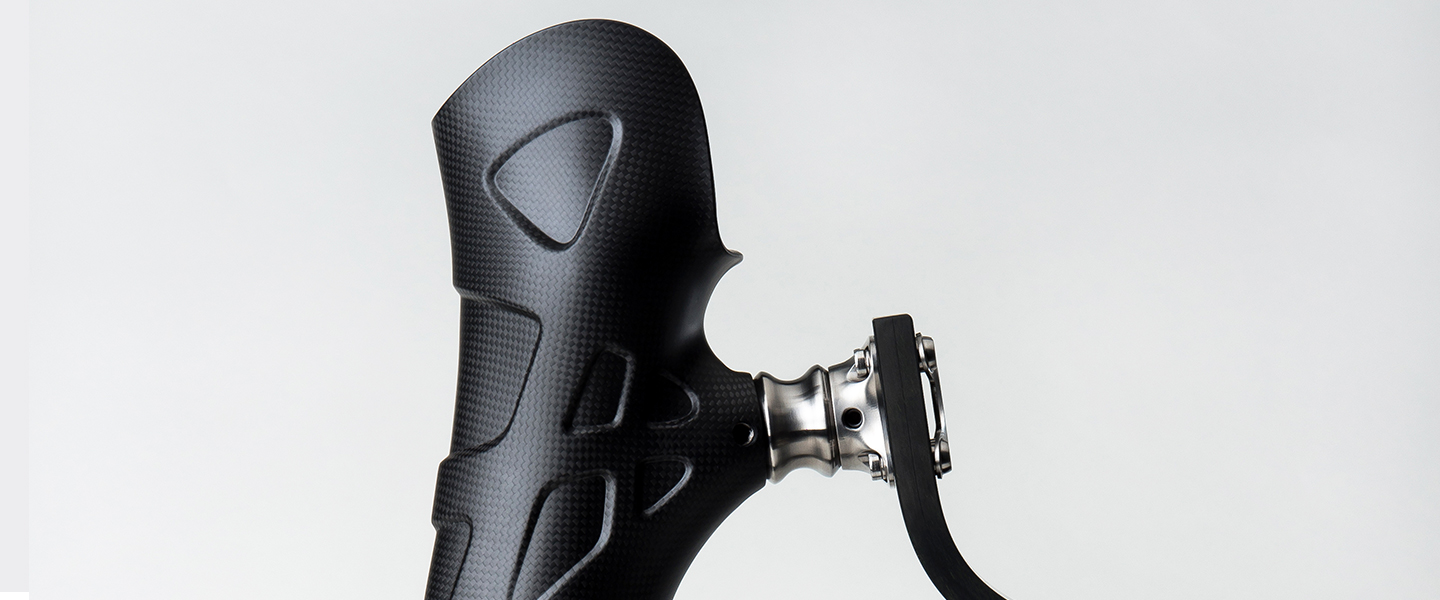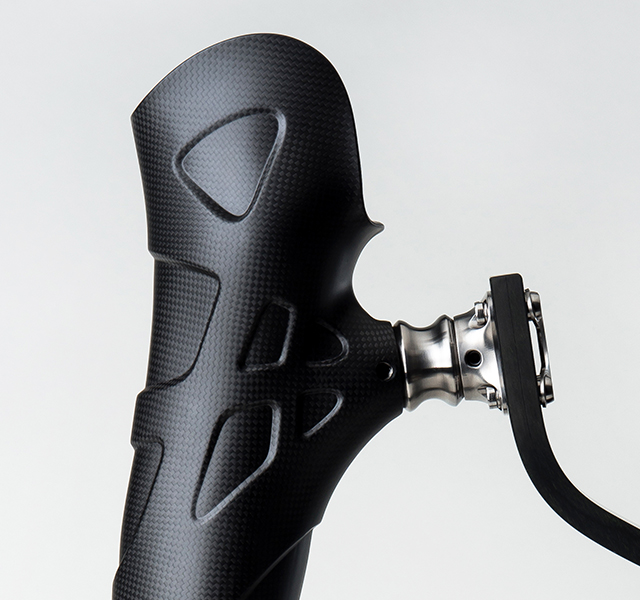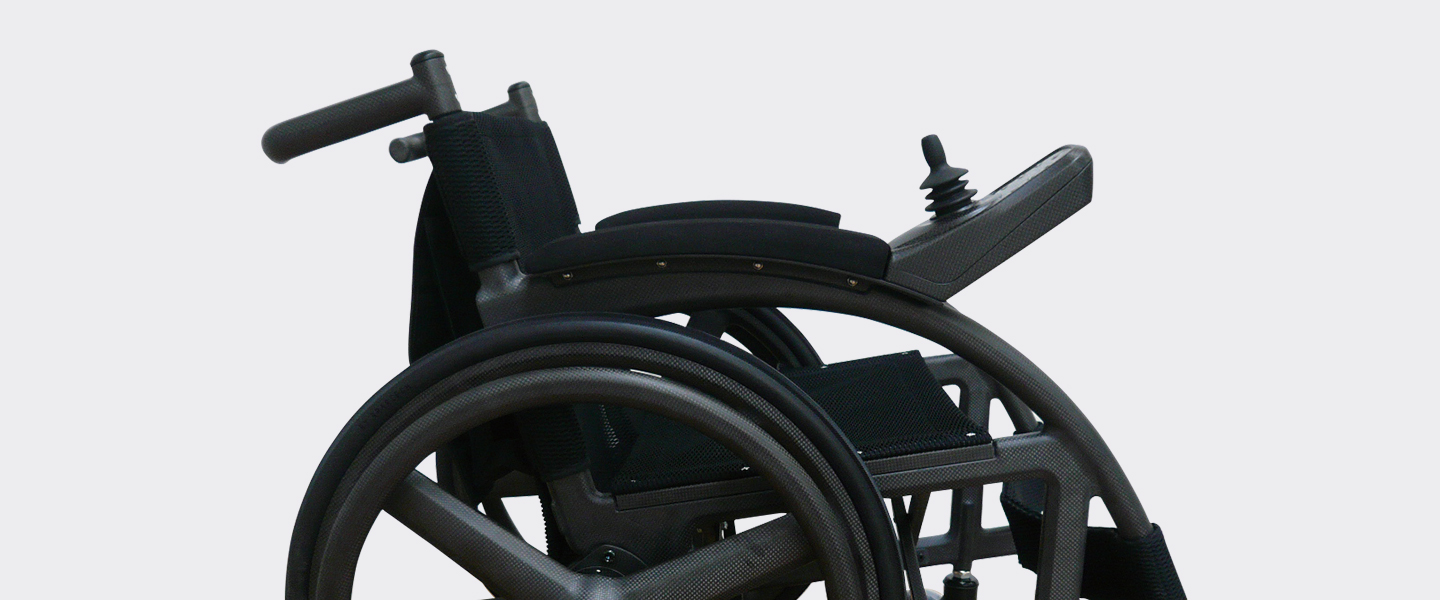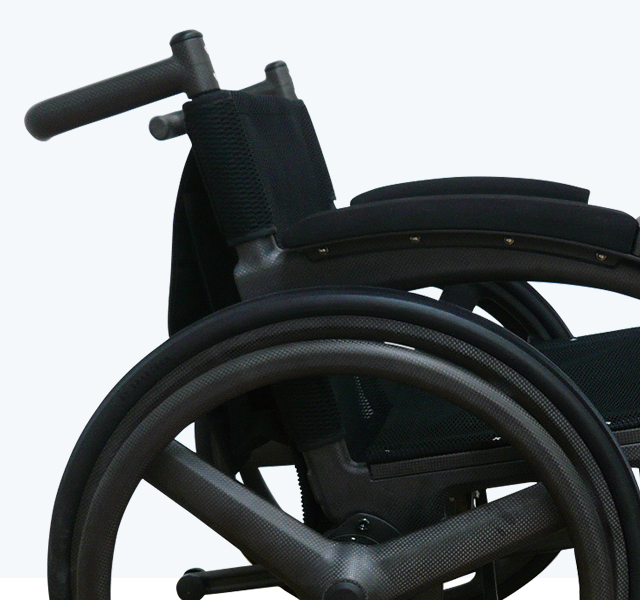CFRP CFRP
Materials to cultivate the future
“Strength” and “lightness”. CFRP solves two contradictory issues in the manufacturing field at the same time. This material, typically known as carbon, possesses comparatively light weight figures of 1.5-1.8, much lighter than steel or aluminum, and additionally boasts astonishing strength, 10 times that of steel with 7 times the elasticity. CFRP proves to be an indispensable material in a wide range of fields due to its resistance to wear or rust, and operates stably under high temperatures.
At RDS, we take pride in our CFRP molding through autoclave molding, engaging in a wide range of CFRP products such as two- and four-wheel race parts, automobile and solar cars, medicine and welfare, and state-of-the-art development.
Rather than simply performing CFRP molding, RDS’s strength lies in its ability to consistently combine design, planning, analysis, molding, and manufacturing, with research conducted into independently devised topics such as “large scale reductions in carbon fiber molding process times through FDM construction methods” and “analysis systems for realizing thin wall processing of dry carbon.” In addition, we aim to propose further added value in line with client’s needs through our experience with material development.
What is the autoclave molding method (dry carbon)?
Prepreg (sheets immersed in resin in carbon fiber fabric) are pre-cut and placed in a mold. The molding technique involves each layer being degassed with a vacuum pump, laminated to the required plate thickness, then placed in an autoclave (large-scale pressure equipment), and molding under high temperature/high pressure/in a vacuum. At RDS, we mainly use this method of autoclave molding, and we are equipped with 2 autoclave machines with a maximum usage temperature of 200℃ and 400℃ respectively.
※Characteristics
- As carbon prepreg is used, thickness and quality can be easily managed.
- Since molding is performed at a high temperature and pressure, the fiber content of the product becomes uniform and all air is removed. Molded articles are of a high strength and durability and light weight.
- The thermal expansion coefficient is low even when used in a high temperature area, and dimensional accuracy is maintained for continuous use in high temperature ranges.
- Special equipment (an autoclave) is required.
- As expensive materials such as prepreg are used, it is utilized in cutting edge fields such as the aerospace, space, and automobile fields (racing related fields such as F1).
- Thermosetting resins such as epoxy and polyimide are used.







